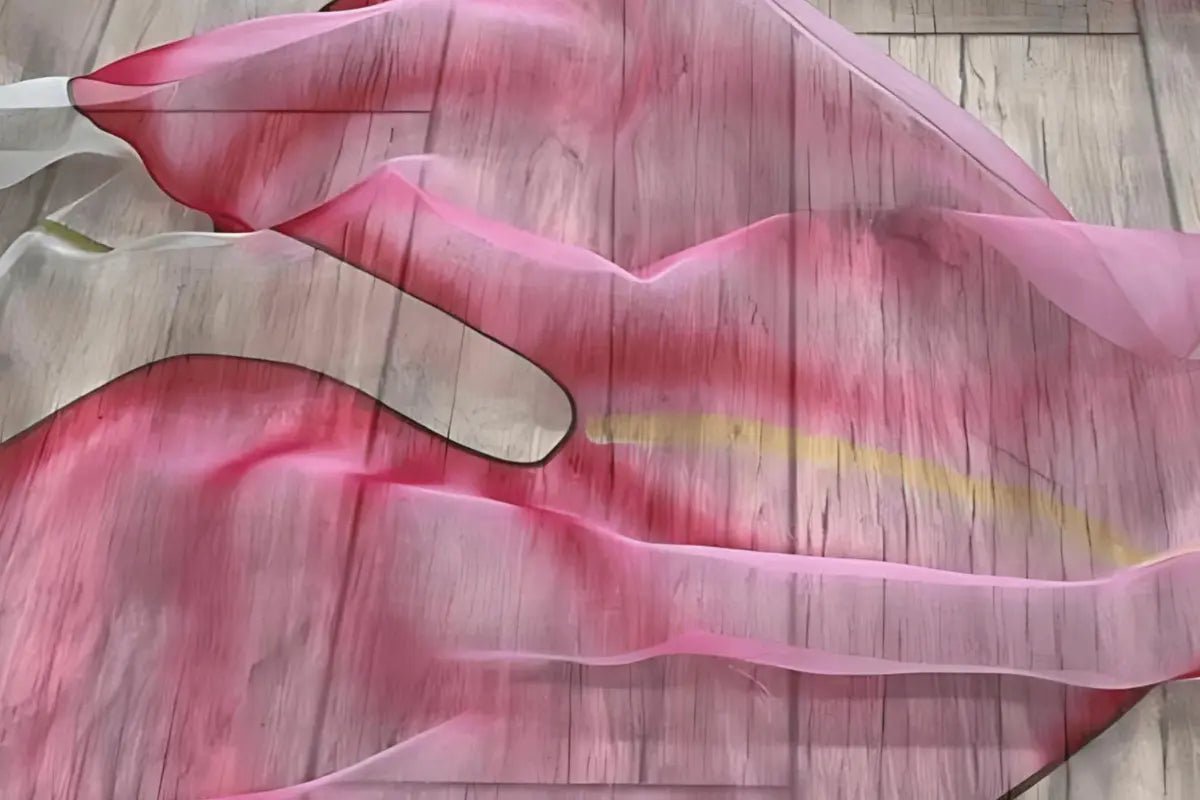Light as air and radiant as glass, organza fabric holds a unique place in fashion. Known for its transparency, crisp texture, and elegant finish, this fabric turns any outfit into a statement. Whether you're designing couture or styling your wardrobe, organza delivers timeless sophistication.
The Origin Story: Where Organza Fabric Comes From
A Journey Through History
Organza fabric traces its origins to the ancient silk trade routes of China, where silk artisans developed this sheer textile from tightly twisted threads. The fabric eventually reached Europe, becoming a favorite in aristocratic and bridal fashion.
Evolution Through Innovation
Today, while silk organza remains a premium choice, polyester and nylon organza make the fabric more accessible. These modern variations retain the elegance of traditional organza while offering durability and affordability for everyday wear.
How Organza Fabric is Made
The Weaving Technique
Organza is woven using a plain weave, where the threads are twisted before being woven together. This technique creates the fabric's signature sheer and crisp texture, which holds shapes well—perfect for voluminous designs.
Chemical Treatment
After weaving, the fabric often undergoes a chemical finishing process that enhances its stiffness, strength, and subtle shine. This results in an ethereal yet structured textile that captures light beautifully.
What Makes Organza Fabric Stand Out
Visual Appeal
Organza's transparent quality allows designers to layer fabrics, creating depth, movement, and shimmer in garments. From bridal veils to high-fashion gowns, organza adds a magical dimension.
Versatility in Fashion
While organza is a staple in bridal wear, it also finds a place in:
-
Party dresses
-
Blouses
-
Sarees and lehengas
-
Accessories like belts, hairbands, and dupattas
Its lightweight structure lets it hold dramatic shapes without adding weight, giving a couture look with everyday comfort.
How to Care for Organza Fabric
Maintenance Tips
Silk organza fabric should be dry-cleaned to maintain its integrity. For synthetic versions (polyester or nylon organza), follow these tips:
-
Hand wash gently with mild detergent
-
Avoid wringing or scrubbing
-
Air dry flat
-
Use low-heat ironing with a pressing cloth to prevent scorching
Proper care helps preserve the fabric's delicate texture and shine for years.
Organza Fabric in Contemporary Fashion
Everyday Wear with a Luxe Touch
Designers today are incorporating organza fabric into ready-to-wear clothing, bringing luxury into casual outfits. From sheer sleeves and layered skirts to decorative overlays, organza's influence is visible across fashion runways and street styles alike.
Accessories & Accents
Organza is not limited to garments. It appears in:
-
Scarves
-
Statement sleeves
-
Dupattas
-
Evening bags
-
Embellished footwear
This flexibility makes organza material a designer favorite across categories.
Why Choose Organza Fabric?
Choosing organza means embracing a fabric that:
-
Offers structure without weight
-
It is suitable for both modern and traditional fashion
-
Creates visual interest with shimmer and transparency
-
Elevates ordinary clothing to statement pieces
Whether you're wearing a gold organza dupatta or styling a modern blouse, organza transforms your look with minimal effort.
From its historical roots to its modern-day relevance, organza fabric proves its staying power in fashion. It combines lightness with strength, elegance with innovation. Whether in traditional Indian attire or global couture, organza enhances any look with an ethereal charm.
By incorporating organza fabric into your wardrobe, you're not just choosing a material—you're choosing a style statement that transcends seasons and trends.
FAQ:
What is organza fabric made of?
Traditionally made from silk, modern organza can also be made from polyester or nylon for durability and affordability.
What are the primary uses of organza?
Organza is used in bridal wear, party dresses, sarees, dupattas, scarves, and fashion accessories.
Is organza fabric easy to maintain?
Silk organza requires dry cleaning, while polyester and nylon organza can be hand-washed gently and ironed with care.
Can organza be worn daily?
Yes, especially synthetic versions, which are used in everyday tops, skirts, and accessories for a touch of elegance.

